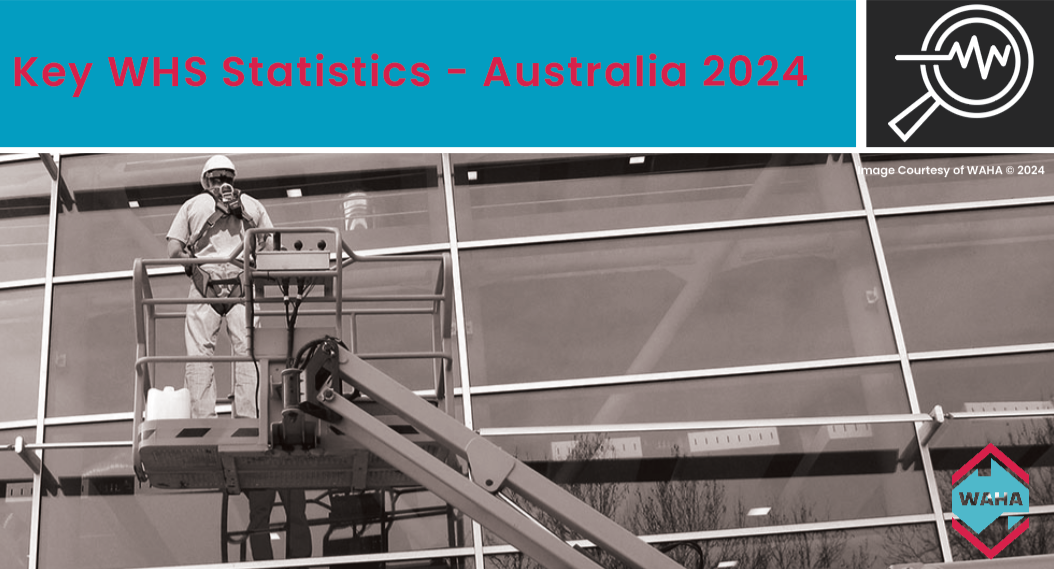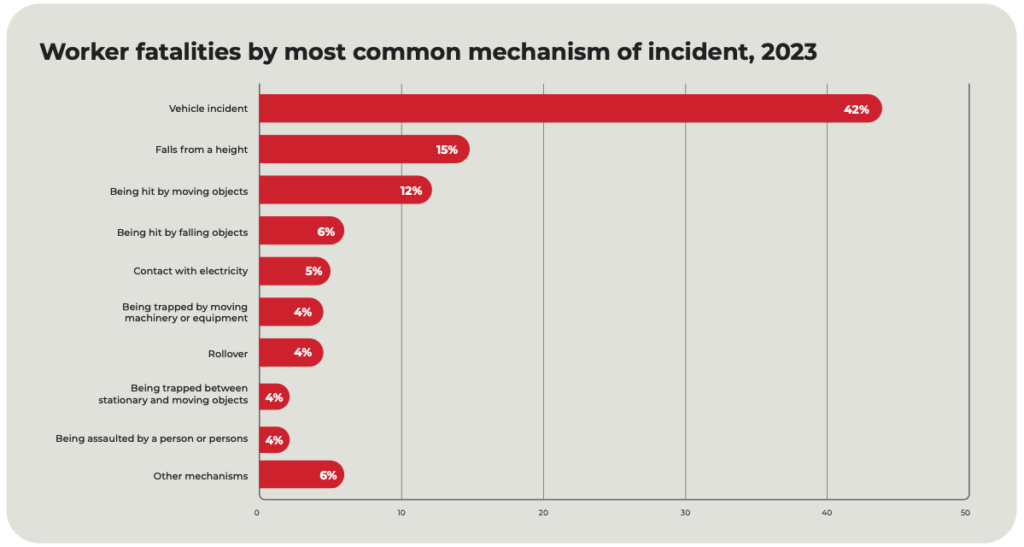
Each year, Safe Work Australia produces national work health and safety statistics, providing important evidence on the state of work health and safety in Australia.
Key Work Health and Safety Statistics, Australia 2024 provides an overview of the latest national data on work-related fatalities and workers’ compensation claims. This includes trends, gender and age comparisons, and industry and occupation breakdowns.
Understanding the causes of injury and the industries most affected can help reduce work-related fatalities, injuries and disease. Work-related fatalities, injuries and illnesses have a devastating impact on workers, their families and the community.
Tragically, 200 workers died in 2023 – of which 29 were killed due to a fall from height.

The mechanism of incident refers to the overall action, exposure or event that describes the circumstances that resulted in a worker fatality.
The number of deaths due to Falls from a height increased in 2023 and was the second highest contributor of worker fatalities overall. 29 worker fatalities (15%) were attributable to the mechanism of incident Falls from a height in 2023. This is 32% higher than the 5-year average of 22 worker fatalities per year (2019 to 2023). 45% (13) of Falls from a height worker deaths in 2023 occurred within the Construction industry. This was followed by worker deaths in the Arts and recreation services, Mining, and Transport, postal and warehousing industries, with 10% (3) worker fatalities occurring in each of those industries in 2023. Nearly 80% of workers who died due to Falls from a height were Labourers (41%, 12), Technician and trades workers (21%, 6) or Machinery operator and drivers (17%, 5) in 2023.
For the last 6 years straight, falls from height remains one of the leading causes of workplace fatalities in Australia.
2017-18
28 falls from height (15%)
15 being hit by falling objects (8%)
2018-19
18 falls from height (13%)
15 being hit by falling objects (10%)
2019-20
21 falls from height (11%)
21 being hit by falling objects (11%)
2020-21
22 falls from height (11%)
17 being hit by falling objects (9%)
2021-22
19 falls from height (11%)
16 being hit by falling objects (9%)
2022-23
17 falls from height (9%)
17 being hit by falling objects (9%)
2023-24
29 falls from height (15%)
12 being hit by falling objects (6%)
In 2023, 62% of worker fatalities occurred in 3 industries. Transport, postal and warehousing fatalities accounted for 26% (51 fatalities), followed by fatalities in the Construction industry (23%; 45 fatalities) and Agriculture, forestry and fishing industry (14%; 27 fatalities). There were also some differences from the long-term average:
- the number of fatalities in the Construction industry in 2023 (45) was 36% higher than the 5-year average for this industry (33), and
- the number of fatalities in the Agriculture, forestry and fishing industry in 2023 (27) was 25% lower than the 5-year average (36).
Over the 10 years to 2022-23p, the proportion of claims for Mental health conditions has increased from 6.4% in 2012-
13 to 10.5% in 2022‑23p. Over this period the number of serious claims for Mental health conditions has increased by 7,200 (97.3%).
- This represents the second largest growth in the number of serious claims for a nature of injury/illness major group observed over the period (just behind the growth of 8,000 Infectious diseases serious claims, driven by COVID-19).
Mental health conditions are one of the costliest forms of workplace injury. They lead to significantly more time off work and higher compensation paid when compared to physical injuries and diseases.
- The median time lost from Mental health condition serious claims in 2021-22 (37.0 working weeks) was more than 5 times the median time lost across all serious claims (7.2).
- The median compensation paid for Mental health condition serious claims in 2021‑22 ($65,400) was more than 4 times the median compensation paid across all serious claims ($14,400).






